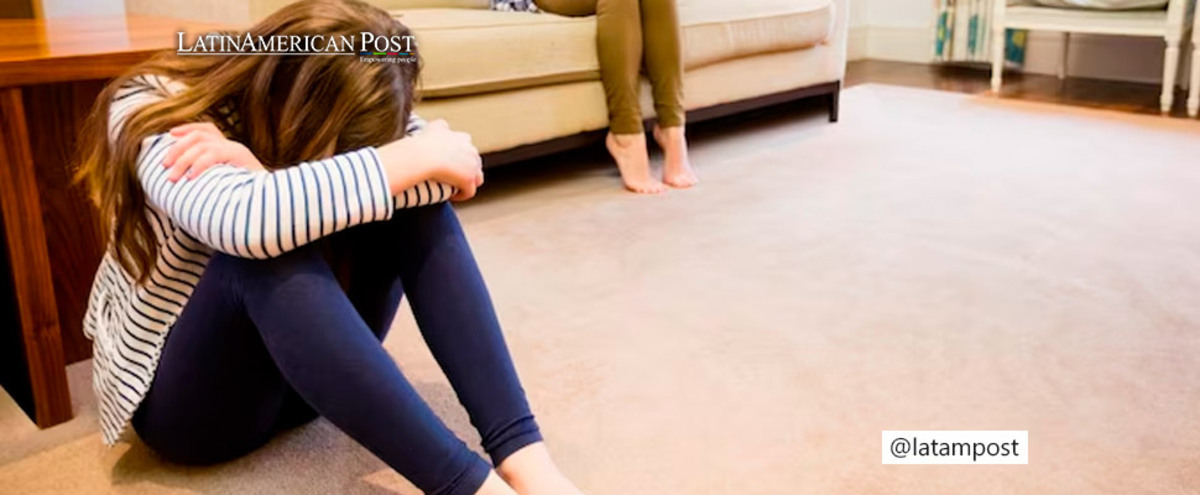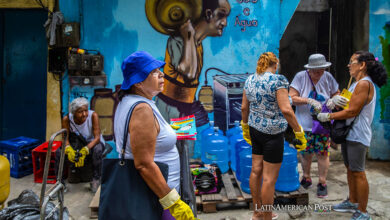Effects of Physical Punishment in Children
Physical punishment is not a method of discipline and less of education. It is a wrong practice that causes low self-esteem, depression, anguish, anxiety and negatively affects the growth and development of children.

Photo: Freepik
LatinAmerican Post | Yenny Rodríguez Barajas
Listen to this article
Leer en español: Peligros del castigo físico en los niños
She doesn't listen to me! I tell him the good things, but he doesn't obey me! Sometimes it's the only way for them to do what I ask! These are some expressions of parents or caregivers to justify physical punishment to encourage good behavior in children.
Although it is true that sometimes the behavior of minors is very challenging, taking adults to the limit of patience and understanding; Physical punishment is never the solution to get them to fulfill their duties, obey an order or correct bad behavior. Quite the opposite. For Alejandra Moreno Porto, psychoanalyst and psychologist, children's challenging behaviors always have an origin, a reason. Just as adults have problems, good days and not so good days; boys and girls also feel vulnerable and express it in different ways.
“Adults -generally- express with words when we feel joy, anger, sadness, and frustration; but boys and girls don't always know how to explain it. They do it through their behaviors or attitudes, which are sometimes defiant, aggressive or negativistic," says the specialist.
She adds that children don't always have to be happy, just because they are children. “Physical punishment will only increase the problem and cause more damage in the short, medium and long term. Through dialogue, the reason for the behavior must be discovered. Earn trust, without shouting, without hitting, children, like any person, deserve respect and consideration.
We recommend you read: 7 Nutritionists to Inspire Healthy Lunch Boxes for Boys and Girls
The dangers are multiple and long-term
According to the Colombian Institute of Family Welfare -ICFB-, physical punishment is more common than is believed and is even considered a method of discipline. Slapping, pinching, spanking, pulling ears or hair, blows with a belt or flip-flops, produce effects contrary to what is sought and negatively affect growth and development.
According to the National Survey of Violence against Boys, Girls and Adolescents in Colombia (2018), 41% of this population has suffered some type of violence. Of them, 72% have been violated in their own home. In 2020 alone, the ICBF initiated 2,482 protection processes for physical violence, this is about seven victims a day.
In the region, the figures are similar. According to research by Jorge Cuartas, a doctoral student in education and human development at Harvard University and a member of the Institute for Quantitative Social Science of the same University, "Despite the risks associated with physical punishment, it continues to be a very common method in Latin America and the Caribbean. Recently, it was found that 16.8 million children between the ages of 2 and 4 (55.2% of the total age range) received spanking and other physical corrections.
The dangers of these practices are multiple, both physical, psychological and relational. They cause atypical brain development, slower cognitive development, mental health problems, such as depression and anxiety in adolescence and adulthood; They are more aggressive, because when they are victims of violence (verbal or physical), they turn to it as a means to resolve conflicts. They will have less self-control, that is, difficulty managing their emotions and/or reactions to frustrations or losses. Furthermore, they will experience symptoms of anxiety, affect or personality disorder, and even think about suicide because they feel humiliated, belittled, ridiculed, and belittled by their own parents.
Minors "who are mistreated, in general, repeat these same behaviors. Most of them are not aware of it, even when many parents visit me in the office, they affirm that a punishment from time to time does not hurt because they were also educated with punishments and are not traumatized. But, when we analyze the different passive-aggressive behaviors with their children and even with their partners, it is detected that the origin of their behaviors is due to the mistreatment they received when they were children, which ended in their loss of self-esteem, anxiety, depression, or aggressiveness”, affirms the psychologist Alejandra Moreno Porto.
From punishment to discipline based on respect
For Adriana Sofía Silva, national deputy director of the Psychology and Families Field of the Colombian College of Psychologists, with a master's degree in psychology and systemic family therapy, “physical punishment is based on adult-centric thinking. That is, when adults and/or caregivers measure the behavior of children and adolescents from their own expectations and perspectives. They do not meet their standards, they invalidate individual differences and justify the use of any kind of forceful “correction” to achieve changes in behavior and conform to what they consider to be good children”.
To break the cycles of violence within families, it must be understood that discipline is taught by example, not imposed. The father/mother and son/daughter relationship is not one of power, where some command and others obey. “It is important to understand that children go through different processes of physical, neurobiological, emotional, psychological, and relational changes that modify their behavior, and parents must learn to be flexible in order to accompany these changes. Being flexible at no time is losing authority, on the contrary, it is maintaining healthy limits that are adjusted to changes in children and adolescents, that is authority, "said the expert.
Parents should be aware of the personal differences of each of their children and, based on this notion, promote a sense of belonging, protection and family identity. "A united family does not mean that all members are or think the same, but that they are part of a great support and impulse system so that each individual can build their own path," she explained.




